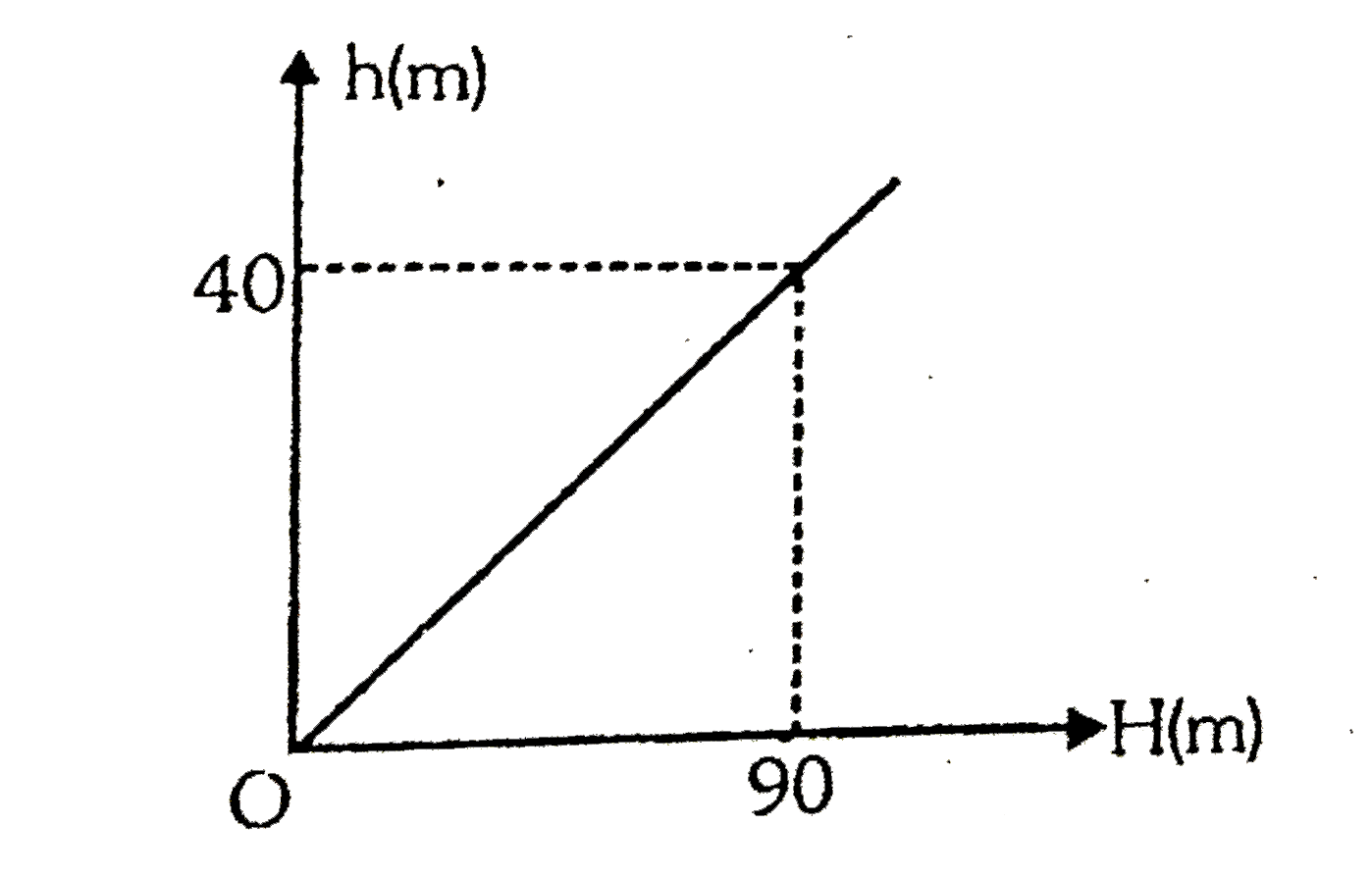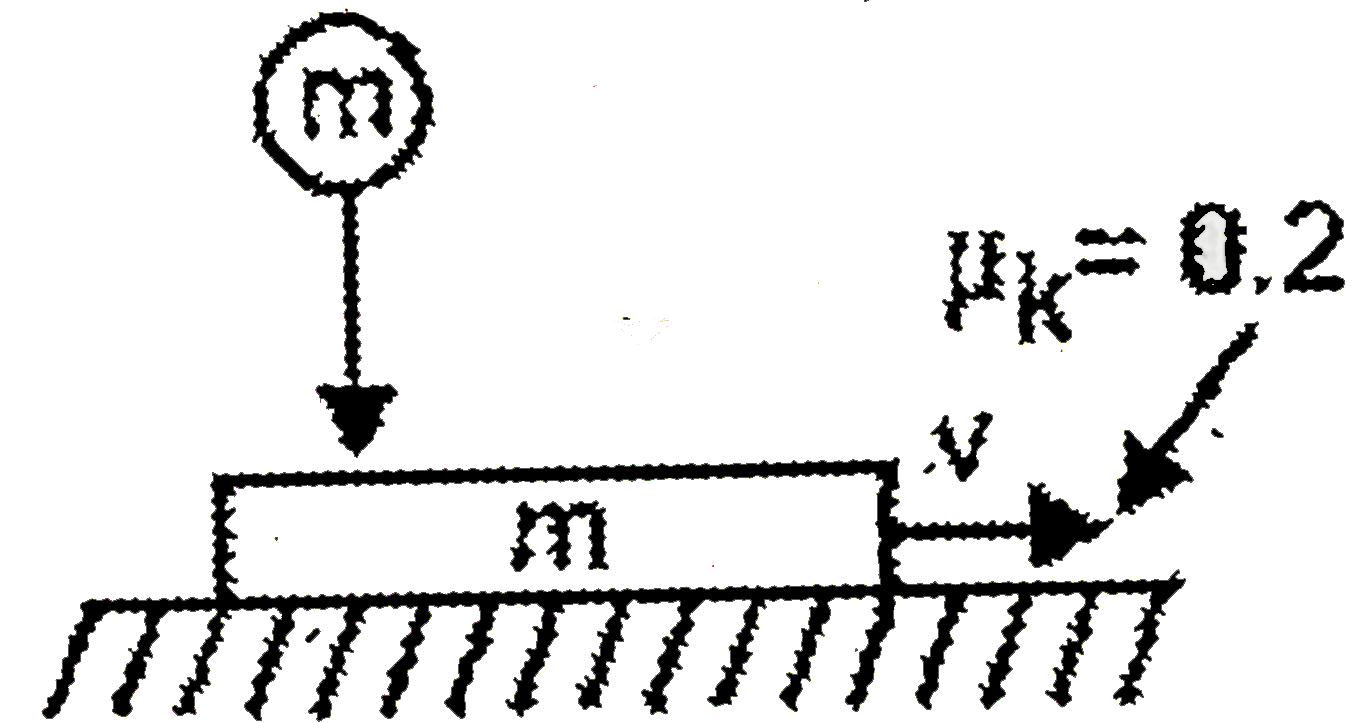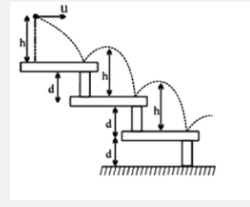A ball of mass m falls from a height h on a stationary horizontal plane and bounces up . If the coefficient of restitution is e, show that, the loss in kinetic energy due of impact is mgh (1−e2).Solution in Bengali
Step by step video & image solution for A ball of mass m falls from a height h on a stationary horizontal plane and bounces up . If the coefficient of restitution is e, show that, the loss in kinetic energy due of impact is mgh (1-e^2). by Physics experts to help you in doubts & scoring excellent marks in Class 11 exams.
Updated on:21/07/2023Similar Questions
A ball of mass 2kg dropped from a height H above a horizontal surface rebounds to a height h after one bounce. The graph that relates H to h is shown in figure. If the ball was dropped from an initial height of 81 m and made ten bounces, the kinetic energy of the ball immediately after the second impact with the surface was

View SolutionA ball is allowed to fall from a height of 10m . If there is 40% loss of energy due to impact, then after one impact ball will go up to
View SolutionA ball of mass m falls vertically from a height h and collides with a block of equal mass m moving horizontally with a velecity υ on a surface. The coefficient of kinetic friction between the block and the surface is 0.2, while the coefficient of restitution e between the ball and the block is 0.5. There is no friction acting between the ball and the block. The velocity of the blockdecreases by :

View SolutionA steel ball of mass w=50gm falls from height h=1 m on the horizontal surface of a massive slab. Find the cumulative momentum imparted to the slab by the ball after numerous bounces, if the coefficient of restitution between the ball and the slab is e = 0.8.
View SolutionA ball is thrown horizontally from a height h above a staircase as shown in the figure. If the coefficient of restitution for any collision between the ball and the staircase is e, then the value of h for which the ball will bounce the same height above each step, is

View Solutionएक गेंद h ऊँचाई से पृथ्वी तल पर अभिलंबवत टकराती है। यदि संघट्ट का प्रत्वस्थान गुणक e हो तो संघट्ट के बाद गेंद किस ऊँचाई तक ऊपर उठेगी ?
View SolutionA ball of mass M falls from a height on a floor for which the coefficient of restitution is e. The height attained by the ball after two rebounds is
View SolutionAfter falling from a height h and striking the ground twice, a ball rise up to the height [e = coefficient of restitution]
View SolutionA ball is dropped from height h on the ground where co-efficient of restitution is e. After one bounce the maximum height is
View SolutionA ball is thrown horizontally from a height h above a staircase as shown in the figure. If the coefficient of restitution for any collision between the ball and the staircase is e, then the value of h for which the ball will bounce the same height above each step, is

View SolutionCoefficient of restitution between a ball and a horizontal floor is e=12 . If the ball falls from a height of 10 m , after its impact with the floor, the ball rebounces up to a height of ………. [Fill in the blank]
View SolutionA particle h falls from a height on a horizontal plane and bounces again. If the coefficient of substitution is e, then the total distance traveled will be:
View SolutionA ball is dropped on a plane horizontal surface from height H. The ball bounces and reaches height h. Show that cofficient of restitution is e = sqrtfrac(h)(H)
View SolutionA ball is allowed to fall from a height of 10m . If there is 40% loss of energy due to impact, then after one impact ball will go up to
View SolutionA ball of mass 2kg dropped from a height H above a horizontal surface rebounds to a height h after one bounce. The graph that relates H to h is shown in figure. If the ball was dropped from an initial height of 81 m and made ten bounces, the kinetic energy of the ball immediately after the second impact with the surface was

View Solution
